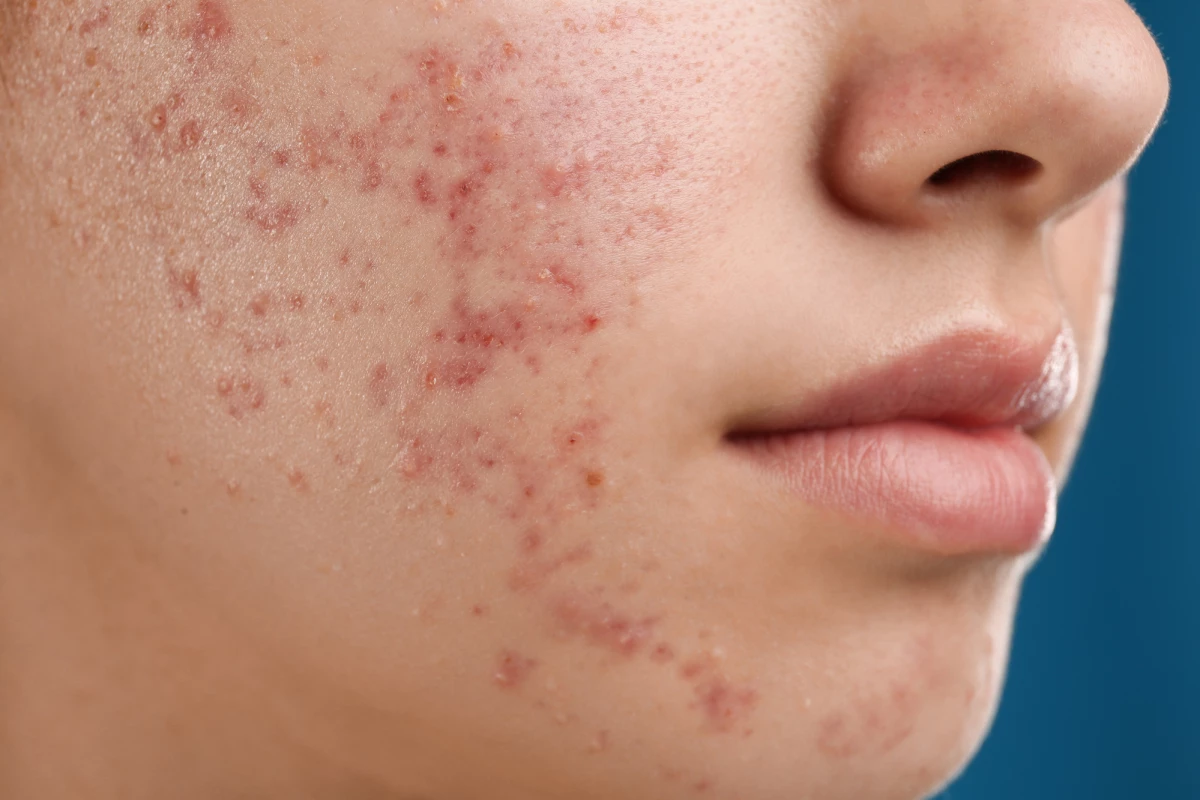A novel microneedle patch may bring new hope to people who struggle to keep their acne under control. Instead of utilizing antibiotics, the device releases nanoparticles that kill acne-causing bacteria when triggered by exposure to ultrasound.
Acne typically occurs when excessive secretion of skin oil clogs hair follicles, creating a low-oxygen microenvironment in which Propionibacterium acnes bacteria thrive. The follicle thus becomes infected and inflamed, producing a raised red pimple.
While orally administered or topically applied antibiotics do help in some cases, they don't work for everyone. They can additionally cause unwanted side effects, plus the bacteria develop a resistance to them over time, lessening their therapeutic effect.
Seeking a better-performing alternative, a University of Hong Kong team led by Prof. Kelvin Yeung developed the special patch.
Microneedle patches in general take the form of small polymer sheets with an array of tiny, sharp, medication-loaded studs on their underside. When the patch is pressed against the body, the needles painlessly penetrate the top layer of the skin. They then harmlessly dissolve and release their pharmaceutical payload into the body.
In the case of this particular patch, the studs contain nanoparticles of a material known as a zinc-based metal-organic framework. Once those particles have been released into P. acnes-infected skin, the area is subjected to pulses of ultrasound. This causes the particles to produce chemicals called reactive oxygen species (ROS), which kill the bacteria.

In tests performed on mice, 15 minutes of ultrasound stimulation was sufficient to eradicate 99.73% of P. acnes in pimples treated with the patch. And as an added bonus, it was found that zinc ions released by the nanoparticles helped trigger existing fibroblasts (connective tissue cells) to begin repairing the skin.
"The new microneedle patch enabling ROS generation upon ultrasound stimulation, regarding as a non-antibiotic and transdermal approach, can not only effectively address the infection induced by P. acnes bacteria, but also facilitates the skin repair due to zinc ion release," said Yeung. "Due to the specific killing mechanism of ROS, we believe that this design is also able to address the other skin infections induced by fungi, parasites, or viruses."
The research is described in a paper that was recently published in the journal Science Advances.
Source: University of Hong Kong via AlphaGalileo





